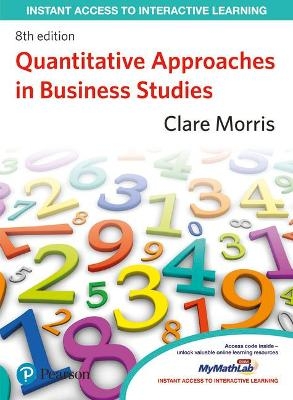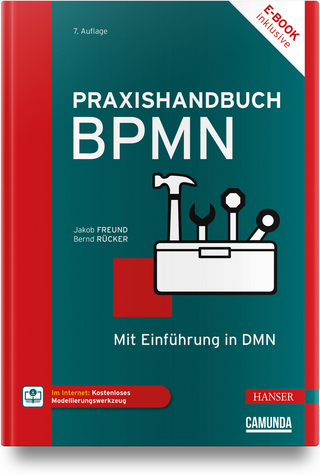
Quantitative Approaches in Business Studies
Financial Times Prentice Hall (Verlag)
9780273738633 (ISBN)
Quantitative Approaches in Business Studies provides a clear and accessible introduction to quantitative methods, ideal for students of business and management on undergraduate, Masters and professional courses.
With a uniquely user-friendly style, Clare Morris' popular treatment of this challenging subject is carefully designed to build students' confidence in the use and interpretation of quantitative methods. Encouraging conceptual understanding as well as practical aptitude, the text leads the reader from an initial chapter revising basic mathematics through to a concluding chapter discussing statistical research methods for student projects.
New for this edition
Access to MyMathLab Global, an unrivalled online tutorial and assessment system.
Many new 'Quantitative Methods in Practice' examples, drawn from recent and topical articles in the press and beyond.
Substantial case-studies at the end of each chapter, integrating the material of the chapter.
Revised and updated throughout.
MyMathLab Global will generate a personalised study plan for you and provide extensive practice questions exactly where you need them.
Interactive questions with randomised values allow you to practise the same concept as many times as you need until you master it.
Guided solutions break down the question for you step-by-step.
A full e-book links out to the relevant part of the text while you are practising.
Students, if interested in purchasing this title with MyMathLab Global, ask your instructor for the correct package ISBN and Course ID. Instructors, contact your Pearson representative for more information.
Clare Morris has taught quantitative methods to students of business, from HND to PhD level, at institutions including Bristol Polytechnic, Warwick Business School and Cardiff Business School. She is currently Emeritus Professor at the University of Gloucestershire.
Clare Morris has taught quantitative methods to students of business from HND to PhD level, at institutions including Bristol Polytechnic, Warwick Business School and Cardiff Business School. She is currently an Emeritus Professor at the University of Gloucestershire.
Introduction: Why quantitative methods?
Part 1 NUMBERS – how we handle them
Tools of the trade: basic numeracy skills
Part 2 NUMBERS – a means of communication
Obtaining the figures: data and data collection
Presenting the figures: tables and diagrams
Summarising the figures: measures of location and spread
Measuring changes: index numbers
Part 3 NUMBERS – a basis for deduction
A firm foundation: elementary probability
Patterns of probability: some distributions
Estimating from samples: inference
Checking a theory: hypothesis testing
Making it better: statistics and quality improvement
Looking for connections: correlation
Spotting the relationship: line fitting
Multiple regression
Part 4 NUMBERS – a tool of planning
Planning an inventory policy: stock control and simulation
Forecasting: time-series, semi-log graphs and exponential smoothing
Allowing for interest: financial mathematics
Planning production levels: linear programming
Planning a project: network analysis
Quantitative methods in the student research project
| Erscheint lt. Verlag | 4.11.2011 |
|---|---|
| Verlagsort | Harlow |
| Sprache | englisch |
| Themenwelt | Mathematik / Informatik ► Mathematik ► Finanz- / Wirtschaftsmathematik |
| ISBN-13 | 9780273738633 / 9780273738633 |
| Zustand | Neuware |
| Informationen gemäß Produktsicherheitsverordnung (GPSR) | |
| Haben Sie eine Frage zum Produkt? |
aus dem Bereich


